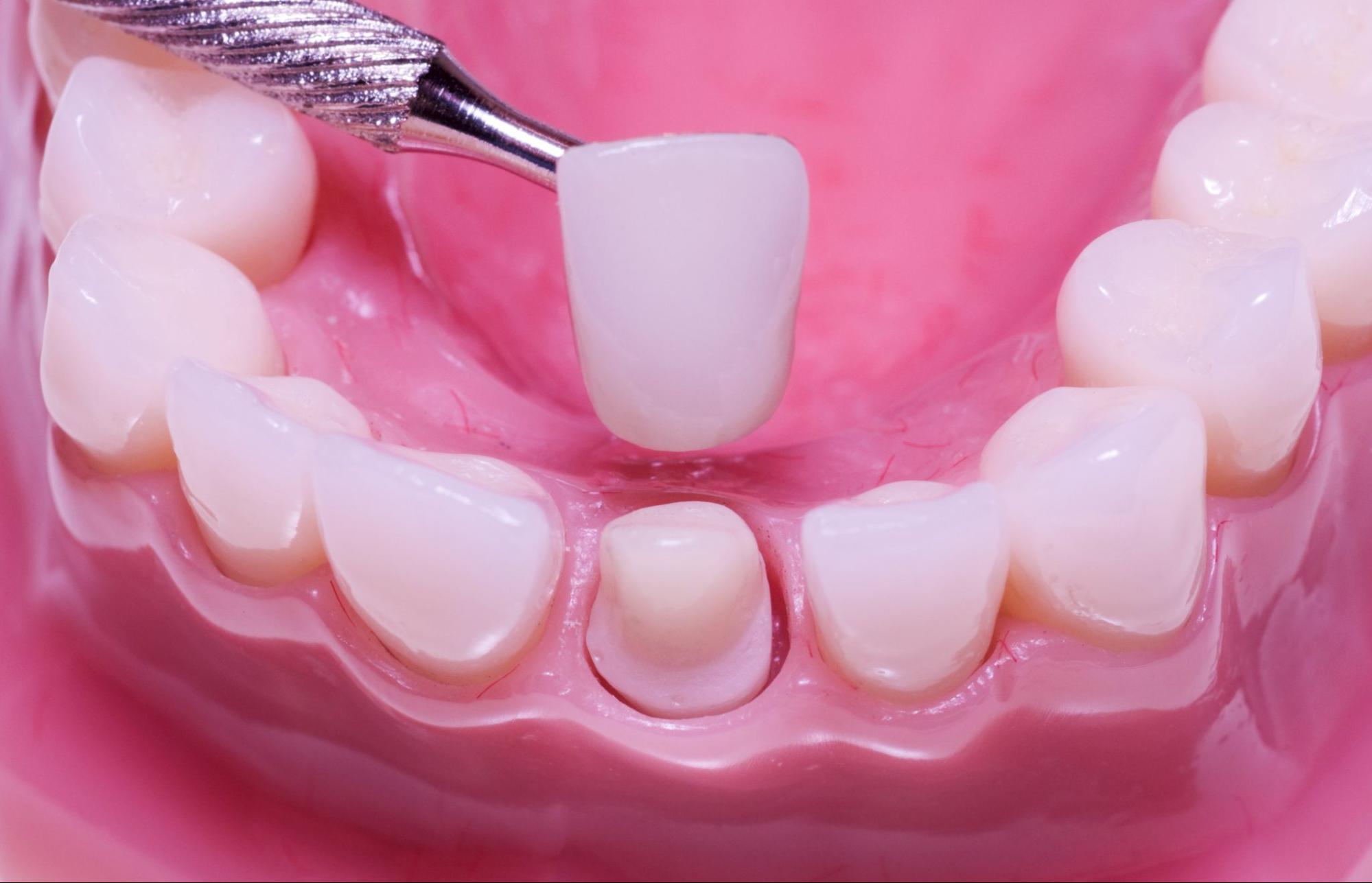Dental Crown Procedure: Everything You Need to Know

Did you know that you can save a weakened tooth from extraction?
Extraction is not the only solution for an excessively decayed or damaged tooth. If you have tooth damage from dental trauma, decay or wear and tear, a dental crown may be able to help. Shaped like a helmet to resemble your natural tooth, a dental crown not only covers with a durable material but also blends seamlessly with your existing teeth for a natural-looking smile.
Interested but hesitant about what the dental crown procedure involves? Read our blog to find out everything you need to know about the procedure and the many restorative benefits of dental crowns.
What is Dental Crown
A dental crown is a tooth-coloured cap or helmet that covers a weakened tooth. It helps rebuild and strengthen the tooth, restoring its appearance and functionality. Dental crowns are generally recommended for teeth damaged due to multiple fillings, excessive decay, cracked or fractured teeth or after a root canal treatment.
The crown material depends on different factors, such as tooth location, aesthetic preferences, and budget. Some of the different types of dental crowns include:
Porcelain – Porcelain crowns offer excellent aesthetics and durability because of their material and the ability to mimic natural teeth. Their average lifespan is ten years or more, depending on the aftercare and maintenance.
Gold – The strongest out of all dental crowns, gold crowns can last for decades with proper care and maintenance. They are made of a gold alloy and are known for their strength and resistance to wear and fracture. But the gold colour makes them more suitable for the back teeth or molars and their durability against biting forces.
Porcelain Fused Metal – These crowns have a metal substructure covered with a layer of tooth-coloured porcelain. They offer the perfect blend of aesthetics and strength with metal on the inside and white porcelain on the outside. They can last for years with the right care.
At our Blackburn practice, the most used dental crowns are porcelain and gold because of their exceptional durability and strength. They are a popular restorative dental treatment to help save your tooth from extraction with a protective cap, preventing it from further deterioration. They also help maintain the alignment of adjacent teeth by filling the gap with a crown customised to fit the space, improving the shape, size, and colour of the weakened or damaged tooth.
Dental Crown Procedure
The dental crown procedure is quick and relatively painless. In your initial consultation, we will perform a dental examination to determine the condition of your teeth and take x-rays if required to examine tooth structure and identify underlying issues.
The dental crown procedure typically consists of two visits:
First Visit
During the first visit, our dentist will remove all the old filling material inside the tooth. This allows us to assess the healthy tooth structure and prepare it for the dental crown. If there is any tooth decay, it will also be removed during this step. The tooth preparation allows us to take an accurate impression or scans of the remaining. The lab will use this model to custom make the crown for your tooth.
The crowns at our practice are not sent overseas but crafted in a local lab in Melbourne. Your tooth impressions are sent to the lab, and it usually takes two to four weeks to custom-make the new crown. You will be given a temporary crown to wear in the meantime. This will protect your tooth and maintain functionality until your permanent one is ready.
Second Visit
After we receive the custom-made crown, we will call you in for your second visit. Our dentist will remove your temporary crown, disinfect the area, and prepare the crown surface for the glue. Once ready, we will cement the crown onto your tooth with a high-strength dental bonding agent for a secure fit and bond.
After the dental crown is attached, our dentist will check the placement and your bite to ensure a secure and comfortable fit. After that, you can leave our practice with a newly restored tooth and smile.
Tips for Recovery after Dental Crown
There is generally little to no discomfort after a dental crown procedure. You can usually resume your normal activities right after receiving your crown, and if you experience any discomfort or mild pain, you can ask your dentists to prescribe pain medication. The most common thing you can experience after getting a dental crown is an issue with your bite. It may feel uncomfortable to chew on or even a little sensitive. . If it persists, you are advised to call your dentist or schedule an appointment to adjust the crown. The reason behind the discomfort could be that the crown is a fraction of a millimetre too thick. This can cause the bite to feel uncomfortable and the tooth to become painful and sensitive. Your dentist will evaluate the fit, check your bite, and make any necessary modifications to ensure the crown aligns correctly with your surrounding teeth and provides optimal functionality.
Caring for your dental crown is easy. Treat it like your natural tooth, brushing with strong fluoride toothpaste and using interdental brushes daily. Be careful about biting down on hard foods to avoid cracks and fractures, and keep your oral health in check with regular dental checkups and preventive care.
Dental Crowns – The Ideal Solution to Restore Your Teeth
Dental crowns are aptly named tooth helmets because of the superior protection they offer for a damaged tooth. At Whitehorse Dental, we take a preventive approach to dental care. We believe your natural teeth can be maintained and restored with preventive and restorative care for a lasting and healthy smile. If you have a weak or damaged tooth which needs to be treated and covered, consult our dentists for bespoke treatments today.

